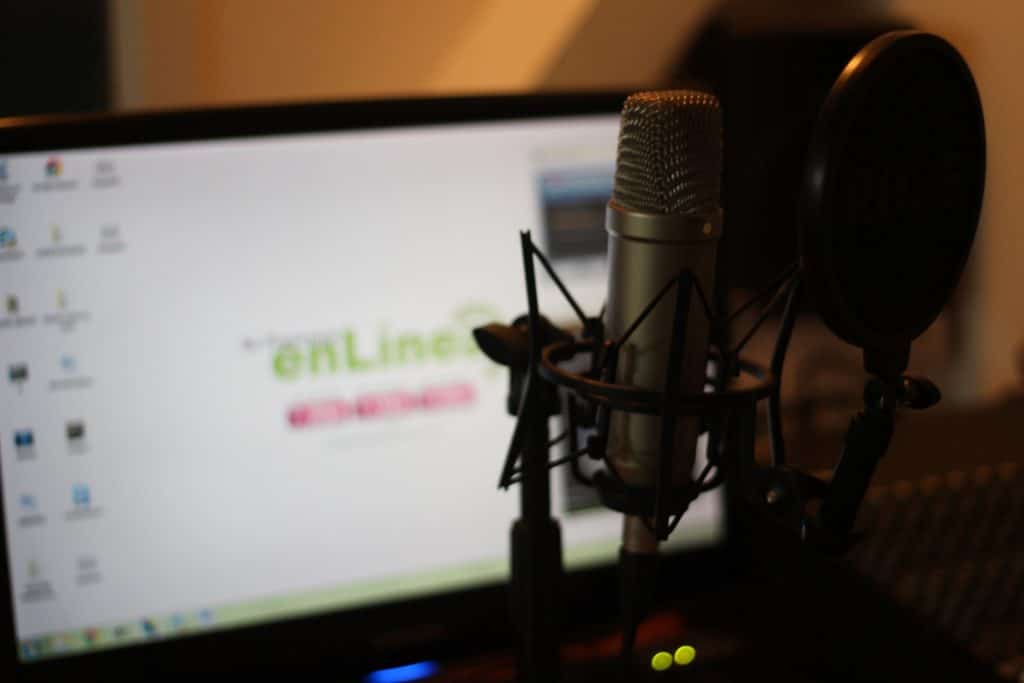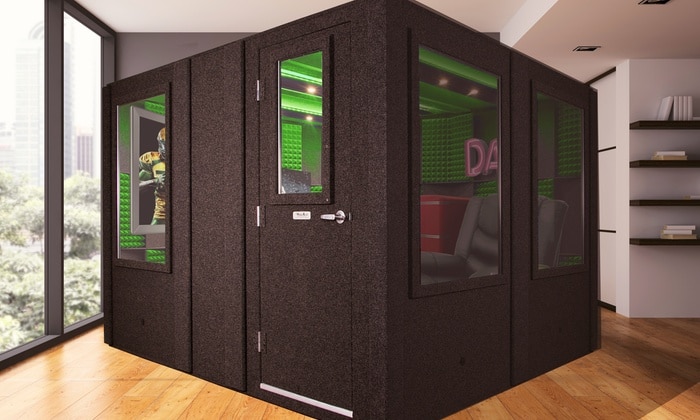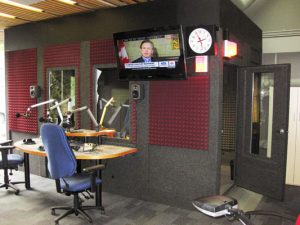Fossil fuels, oil spills, and water contamination typically take the forefront when we think about environmental pollution. However, the phrase “noise pollution” has a serious context that impacts our modern world in ways you might not even be aware of.
What is Noise Pollution?
It’s important to define what the phrase means before going further into how it involves us. The term refers to all the noise that enters society as a result of industrialization. Construction, transportation, technology, and everything around us unintentionally adds constant noise to our lives.
Transportation: Noise Pollution’s Biggest Cause
Almost all of the U.S. population is affected by persistent noise from traffic.
According to the Bureau of Transportation, 97 percent of Americans are continually exposed to the sound from aviation and interstate traffic. These nonstop noises range between 35 and 50 decibels. For reference, that’s about as loud as a refrigerator’s hum or two people talking calmly at home in a quiet suburb.

However, the sound doesn’t have to be ear-piercingly harsh. For example, the small whirring of your computer’s fan is something that’s defined as noise pollution.
What Does It Do?

Over a long period of time, noise pollution exposure on a regular basis can result in severe outcomes.
For example, high blood pressure is a commonly recognized symptom from exposure, and studies suggest that noise pollution can also contribute to other complications.
Complications from exposure
- Disturbances of sleep
- Hearing damage
- Increased levels of stress hormones such as cortisol
- High blood pressure
- Increases in heart rate and cardiac output
Negative effects of noise pollution
The bad effects of noise pollution don’t stop there. For example, many people who deal with noise pollution are also prone to suffering from psychological issues and mental illness.
When coupled with the many other health detriments that can directly result from noise pollution, it’s clear that there are many negative aspects of being exposed to constant noise on a daily basis.
Can You Stop It?
As our society becomes more technologically advanced and crowded, it seems near-impossible to truly put an end to noise pollution.
Is the only option to move away from a city and live a quiet, rural life? Not necessarily—though living in a city increases your chance of always being exposed to sounds, you can still take action to lower the amount of noise you’re exposed to.
Wear earplugs while commuting
Wearing earplugs during daily commutes is one option. You can avoid exposing yourself to unnecessarily loud sounds by having earplugs in during your subway and bus rides.
Unplug unnecessary electronics
If you want to remove as much noise from your apartment or house, you should focus on unplugging any electronics that you don’t use often. Though their presence is typically subtle, electronics can add to the noise that’s present in a space.
Home decor and soundproofing
You can also employ soundproofing methods such as strategically putting certain furniture throughout your home. Plants, rugs, and even soundproofing wall pieces will help reduce outdoor noises.
If you want a guaranteed escape from noise pollution, our sound isolation enclosures provide you with a quiet space that will give you a break from all distractions.
8 Tips to Perfect Your Voice Over Audition
Having a natural voice talent is a blessing. Having the ability to speak in pleasing but attention-grabbing tones is something you should embrace. However, before you can start getting voiceover work, you need to nail your audition. These are eight tips designed to help you perfect your voice over audition.
1. Study the Script
Voice over scripts need to be understood before they can be read. Interpret it down to every last word and inflection.
You need to be able to internalize the words and present them in such a natural way that it never sounds like you’re reading a script.

2. Vocal Warmups
Enunciation is one of the biggest building blocks that voice actors need. Before you ever hit that record button, you should be doing vocal warmups such as lip trills and tongue twisters to loosen facial muscles.
Stay hydrated to keep your vocal cords fresh and practice pronunciation so that every word comes out clear as day. Also, practice diaphragmatic breathing so that your voice is delivered with full strength.
3. Get into Character
Knowing your character will allow you to be a far better voice artist. Don’t let voice acting allow you to think that performance can be phoned in on the spot. The principles of acting are universal.
You need to have a good grasp of your character and their motivations. Sketch out what their backstory might be and what their motivations are. Become the character you have created.
4. Act it Out
Once you’ve got a good sense of your character, you need to become them physically. Get as expressive as possible, using your face and body to really sell your character.
If your character is ill-tempered, then you need to present unrelenting rage. Exaggeration in your facial and body language is okay, as the audience who watches the final product won’t be seeing you. Facial expressions influence your voice and this will help you to better sell the script to get more voice over work.
5. Follow Directions
Casting directors are going to go with actors who not only turn in good auditions but who also follow directions. Online auditions will have specific directions that you need to commit to before you start recording.
When auditioning in-person, pay close attention to what directions the casting director gives you. You want to make an impression, but you also want to show that you’re not going to stray too far from what they have in mind.
6. Briefly Slate in Character
When you start your audition, you need to slate. Start off by sharing your name and the character you’re auditioning for. Don’t do this for too long but make sure to do your slating as your character.
This can help you to quickly transition into the script, as you’ll be in the mindset of the character much sooner. Whatever you do, don’t overthink your slate. Just be normal and keep it brief.
7. Make Multiple Takes
Quantity can end up being as important as quality with your voice over audition. Because some scripts might have more than one interpretation, you can deliver multiple versions.
Generally speaking, you shouldn’t do more than two. In an online audition, do as many takes as you need to before you have ones that you’re fully satisfied with. In-person, tell the casting director that you want to do two takes. Make a point of making each take distinct but consistent in quality.

8. Be Efficient, Don’t Waste Time
Voice artists can’t afford to get hung up on one audition and securing one role. Once you’ve completed a strong take for one script, send it in and pat yourself on the back. Then, get to work on finding your next audition.
Putting work into finding auditions is as important as actually doing well. The internet has provided voice-over artists with more opportunities than ever. You won’t get every role, but every audition you get through is another achievement because it gives you more experience.
The most successful voice artists reached that point partly because of how much time and dedication they put into finding work.
As your VO career gains traction, it’s efficient to have a professional home studio to work from. Learn about the solutions WhisperRoom™ has for voice overs and check out our 26 different sized booths.

Father’s Day is right around the corner and WhisperRoom™ has partnered with Groupon for the chance to gift your dad with an unusually spectacular present. Reward your old man with a $60,000 soundproof man cave so he can escape the real world and spend time relaxing without any disturbances.

What Does the Soundproof WhisperRoom™ Man Cave Include?
The $60,000 package deal is fully furnished and includes a double-walled system for the highest level of noise reduction available, remote-controlled studio lights, a ventilation system, a lock to ensure privacy, and the following items:
• 8′ x 10′ double-walled MDL 96120 E WhisperRoom™ Isolation Booth
• 32″ ADA accessible door, raised floor, and exterior ramp
• Acoustic Tuning Package (ATP)
• Three Enhanced Windows (32″ x 42″)
• 65″ 4K Ultra HD Smart OLED TV
• Power Recliner
• 2.1-channel 300W Soundbar System with a wireless sub woofer
• 3.1 Cu. Ft. Mini Refrigerator
• Memorabilia of favorite college or professional sports team
• Side Table
• Professional Installation
The Perfect Gift for Dad and His Well-Being
We know it’s hard to put a price on your dad’s health, but this $60,000 fully furnished sound isolation man cave might be the long-term remedy to help lower his daily stress level. Studies have shown that personal well-being is highly correlated with the environment that people experience when they get home. Additionally, “stress is what stops most people from getting the results they want in life, says entrepreneur Arman Sadeghi. “As stress increases — the human body changes. Hormone levels change and success becomes much harder. Of course, this then further increases stress, so it’s an unfortunate cycle that feeds itself.” Help stop the cycle of chronic stress with a gift that’s designed to provide an oasis for entertainment and will last for years. The booth is also completely portable so he will never have to worry about parting ways with the room.
So gift your dad with a soundproof space where he can work on his hobbies, kick back with a cold beverage, or spend time watching his favorite teams fight it out on the big screen. Unlike the typical Father’s Day gift of a tie or new golf club, this soundproof man cave is something he can look forward to using every day of the year.

Visit the Groupon Father’s Day Gift Shop
If you don’t have a spare $60,000 laying around but still want to help your dad relax on Father’s Day, don’t worry. Groupon has a number of ways that you can help your dad get some leisure time. View their complete Groupon Father’s Day gift shop here.
What is Acoustics?Here at WhisperRoom™, we want you to accurately comprehend the importance of acoustics. This understanding helps you make better choices when shopping for sound isolation enclosures, equipment for your recording booth, and other gear for your studio.
So what is acoustics? Acoustics is a term referring to the qualities that determine a room’s ability to reflect sound waves in such a way as to produce distinct hearing. It also refers to the science of sound with respect to its production, effects, control, transmission, and reception.
Room Acoustics
When you create any sound in a room, what you hear is actually the reflection of the sound wave bouncing off of the walls, floor, and ceiling. The qualities of a room that reflect audible sound are known as the room’s acoustics. For instance, if you were to strike an “E” chord on the piano in a small rehearsal space and again in a large auditorium, you would get two different sounds. Each room’s acoustics will cause the chord to sound drastically different.
After you release the piano keys, the sound waves will continue to travel until they run out of energy and eventually stop. This resonating persistence of sound is called reverberation. Hence, the chord played in the auditorium will ring out longer than in the small room because both rooms have distinct acoustical characteristics.
A room’s reverberation time depends on the room’s volume and the ability of its components – ceiling, floor, walls, and equipment – to absorb sound. Similar to controlling the reverberation time of an instrument, you can also take control of the reverberation time inside of a room by making adjustments to the room acoustics such as installing acoustic panels, using sound-absorbing materials, or changing the room’s layout.

How to Acoustically Treat A Room: Diffusion and Sound Absorption
Every room has different sounding acoustics and unique reflective surfaces, so it takes some time to figure out how to acoustically treat a room and achieve the sound you are looking for. For starters, the two basic approaches to achieving proper room acoustics are absorption and diffusion. Absorption refers to the use of materials with sound absorptive properties. These materials include foam, heavy blankets, and rigid mineral wool.
Since high-frequency noises travel quicker and not as far of a distance as lower frequencies, absorption works most effectively on high-frequency sounds by reducing flutter echoes. Use absorptive materials to reduce bright sounds in performance halls, practice rooms, and recording studios. Low-frequency energy is more difficult to control because the sound waves are much longer and conventional absorption isn’t as effective. In this case, we recommend strategically placing bass traps in the corners of the room.
Different than absorption, diffusion helps control the energy in the room and improves sound quality in middle and high-range spectrum frequencies. It works by using multi-faceted surfaces to scatter sound energy. Common materials for diffusers include plastic, polystyrene, and wood. These materials are also used for various other acoustical treatments.
Where To Place Absorption & Diffusion Technology
Ideally, a room design takes acoustics into account, and construction of the room occurs with reverberation time calculated. For instance, all the components of a WhisperRoom™ are produced from the same materials. Due to the unique booth design, there is equivalent sound attenuation for the entire unit. If this is not the case for your atmosphere, you can still improve the acoustics of the room by using absorption and diffusion techniques.
Sound Measuring Devices
When diagnosing a new room’s sound environment or improving your current room’s acoustics we recommend using a handful of tools. A sound level meter accurately measures sound and noise pollution, while dosimeters and octave band analyzers help measure noise levels.
Acoustically Treating A WhisperRoom™
The folks at WhisperRoom™ understand the importance of a room’s acoustics, so we created a cost-effective solution to creating the perfect interior acoustical environment. If you currently own a WhisperRoom™ or are considering investing in one of our portable recording studios – make sure to check out an optional feature called the Acoustic Tuning Package (ATP). The ATP consists of a series of angled deflector panels attached to the interior surface of two perpendicular walls. Open voids created behind each angled deflector panel provide soundwave entrapment and help combat standing waves. It also includes studio foam on the deflector panels to control mid to high frequencies, and LENRD bass traps control bass frequencies. Check out the video below!
To better understand acoustics, it’s helpful to familiarize yourself with a few key terms:
• Amplitude: refers to the size of sound vibration and is primarily responsible for determining the loudness of the sound.
• Frequency: refers to sound vibration’s speed and it determines the sound’s pitch. The number of sound wave cycles occurring in a single second determines the Hertz (Hz for short).
• Fullness: refers to the amplitude of the reverb relative to the initial sound.
• Clarity: refers to the sound achieved by the reduced amplitude of the reverb and it generally has a shorter reverb time. It is the opposite of fullness.
• Liveness: refers to a room with a long reverb time. The term “live room” refers to this.
• Deadness: refers to a room with a short reverb time. The term “dead room” refers to this.
• Intimacy: refers to a room that delivers the first reverb sound to the listener within 20 milliseconds of the direct, aka initial, sound. It results in the listener’s experience of being physically close to the performer.
• Warmth: also referred to as brilliance, is the reverb time at low frequencies relative to higher frequencies.
• Texture: refers to the interval of time between the arrival of the direct sound and the first reverberations. The first five reflections need to reach the listener within 60 milliseconds for the noise to have a good texture.
• Blend: refers to the sound mix of all performers and its uniform distribution to listeners. In a live performance, this often requires reflectors to help properly distribute the sounds.

Sound is all around us. We hear and process noises that come from traffic, people, electronic devices, and even animals and plants. If you are a musician or involved in the sound industry, you know how even the smallest of noises can have a big effect on your acoustics. General background noise in a typical urban setting ranges between 50 and 70 decibels, which is comparable to the average concentration—loud enough to disrupt any recording session where even the slightest alteration in tone, pitch, or rhythm could have a major impact.
Setting aside a specific place for practicing music or for mixing and engineering sound is an obvious but, nevertheless good, idea. However, working from a modern home or office can make it difficult to achieve the kind of quiet, distraction-free environment you need to get the best sound possible.
Looking for a solution? Consider a sound isolation enclosure or booth. Using a professionally constructed, state-of-the-art sound enclosure allows you to significantly reduce the amount of ambient background noise you hear inside, while also keeping your neighbors happy because the noise leaving the booth is diminished by a significant amount. Having a sound enclosure on hand allows you to quickly and easily access a distraction-free area. Once inside, you can benefit from a secluded, removed environment to focus on your recording.
An enclosure also allows you to handily keep your gear in one place, and keep it set up and ready to go. This saves time because it eliminates having to search for the things you need. And, your enclosure moves with you when you need to relocate to a different location or when you go on tour. To find out more about how sound engineers, testers, audio mixers, and musicians can get the most from their instrument, read this guide on what to include in a music enclosure..
At WhisperRoom, Inc., Sound Isolation Enclosures, we have more than a quarter century of experience producing the finest sound isolation enclosures and booths available on the market. We offer a variety of different models, all of which come equipped with a ventilation system; cable passages for audio equipment, electrical cables and computers; acoustic studio foam; and fluorescent lighting. We also offer booths that are handicap accessible in accordance with American Disability Association (ADA) standards.
We also have new packages of features that are available to allow you even more control over the production of your sound. The Acoustic Tuning Package (ATP) features angled deflector panels that attach to perpendicular walls inside a WhisperRoom. You control the direction and pattern of these panels, as it suits your own unique acoustical needs. Components of these panels include acoustical foam sheets, which control mid to high frequencies; Lenrd Bass Traps, which allow management of lower frequencies; and open voids, which provide sound wave entrapment.
Each WhisperRoom comes with a limited five-year warranty from the date of purpose. If you are intrigued by the benefits of a sound isolation enclosure or booth, and you would like to learn more about our products, then call our headquarters at (800) 200-8168 today, or send an e-mail to info@whisperroom.com.
Based in Morristown, TN, WhisperRoom, Inc. Sound Isolation Enclosures has been reducing sound to a whisper for our clients across the United States since 1990.





